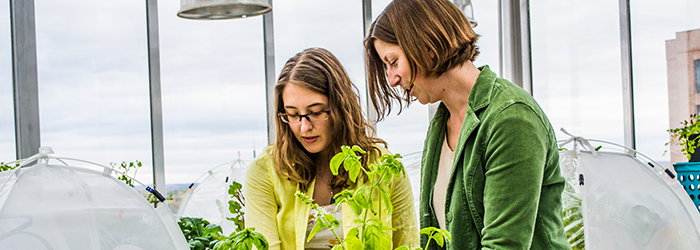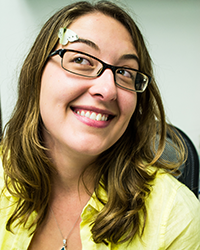Undergraduate Rhea Smykalski investigates transgenerational effects of learning in butterflies in the Snell-Rood lab.

You don’t usually think of butterflies as big thinkers, but even these flighty members of the insect world have the capacity to learn. There’s just one hitch. The larger brains required for learning come at a cost: later maturity and fewer eggs. It’s a trade-off between being a butterfly brainiac or an insect octomom.
Are these trade-offs as ephemeral as the butterflies, or do they have consequences across generations? Rhea Smykalski, undergraduate in Evolution, Ecology and Behavior (EEB), studies the persistence of these physiological changes in the lab of Emilie Snell-Rood, Assistant Professor in EEB. She hypothesizes that experiences in one generation of butterflies affect brain development and reproductive investment in the next generation.

Now Smykalski is dissecting the first generation of offspring, delicately tweezing apart Princess Leia-style buns of eggs and weighing oodles of miniscule brains. Despite hours of this delicate work, she is enthusiastic about her chance to participate in a research project of her own.
"Nobody else is on this but me, so I have to be in charge,” says Smykalski. It’s a lot of pressure, but any “Eureka!” moments will be hers as well.
Snell-Rood is enthusiastic about opportunities for undergraduate research at the U of M. "It is incredibly beneficial to see how science works in the lab,” says Snell-Rood. “You get hints of that in class, but I don't think you quite grasp the intensity of it until you are in the lab."
Smykalski transferred to the U of M so that she could participate in research. Now, she’s hard at work on both this directed research project, and an accompanying Undergraduate Research Opportunity (UROP) grant.
With first-hand experience in science, Smykalski is confident that research is exactly what she wants to do after graduating. "It’s a great feeling to know that I'm where I want to be, and that my research is leading me down a path I want to go."
– Lisa Harn